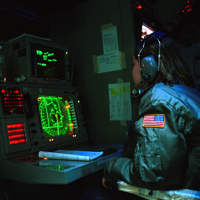Ten years ago, the concept of "network-centric warfare" dominated U.S. military thinking and deployment. An outgrowth of work associated with the Revolution in Military Affairs, network-centric warfare envisioned a battle space in which information dominance and standoff killing power gave the U.S. military supremacy across the combat spectrum. Influential in doctrine and acquisitions, network-centric warfare offered the tempting promise of eliminating Carl von Clausewitz' fog of war, making the battlefield legible and, for well-prepared U.S. forces, malleable. Platforms such as the Navy's Littoral Combat Ship and DDG-1000, the Army's Future Combat System, and the F-35 multirole combat aircraft were envisioned to play key roles in a "system of systems" capable of taking apart and rendering inert an enemy military organization. In one sense, network-centric warfare represented a remarkably optimistic vision of what a well-structured, well-oiled government bureaucracy might do when given the appropriate tools. Knowledge, in the right hands and going in the right direction, literally meant power.
Perhaps inevitably, problems emerged when that vision met reality. Although the U.S. military quickly disassembled Saddam Hussein's army in 2003, it had great difficulty with the insurgency that followed. The battle space in post-invasion Iraq, made up in large part of human beings, proved troublingly opaque. In many cases, too much information proved as problematic as not enough. Network-centric warfare didn't exactly fail, but most now recognize that it conceived of information dominance in overly simplistic terms, especially in the context of wars against substate actors, like insurgents or terrorist organizations.
Adam Elkus situates network-centric warfare, and the related concept of "effects-based operations," within a family of military doctrines seeking to cause "strategic paralysis." Doctrines of strategic paralysis envision leveraging minimal force into catastrophic effect by directly targeting the enemy's center of gravity. As Elkus and others have suggested, the quest for strategic paralysis emerged from the stalemate in the trenches of the Western Front during World War I. Both sides, but particularly the Allies, sought technological and doctrinal "fixes" that could win the war -- and future wars -- quickly, decisively and at low cost. The work of early airpower theorists, who argued that strategic bombing could induce the collapse of enemy governments without the destruction of enemy armies, represent an early and well-known example of strategic paralysis advocates. Writers such as Giulio Douhet and Billy Mitchell believed that they could calculate with precision the amount of ordnance necessary to make society descend into chaos, as well as the exact factories that needed to be destroyed to cause a modern industrial economy to grind to a halt.

